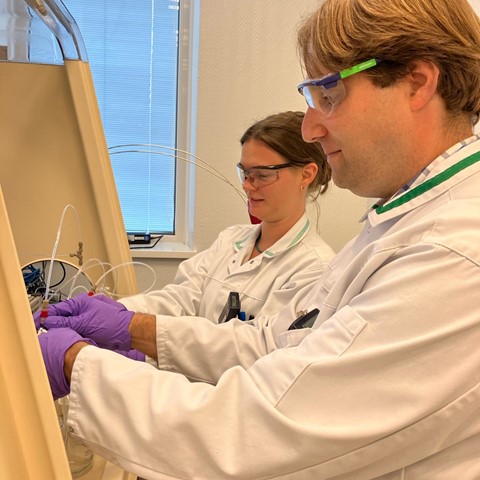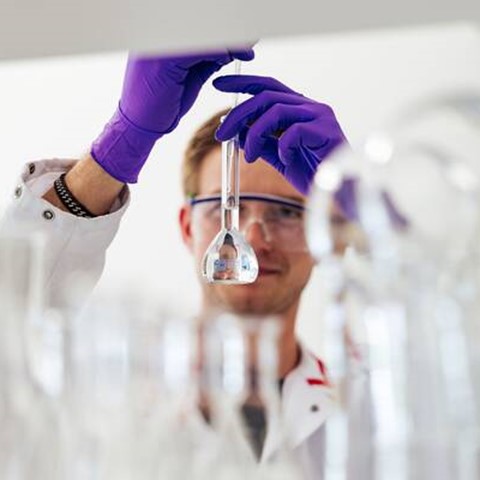Successful SAT of the Prep-HPLC Marks Milestone for GMP Production of Lutetium-177 n.c.a.
Successful SAT of the Prep-HPLC Marks Milestone for GMP Production of Lutetium-177 n.c.a.
28 February 2024
PETTEN - In a significant achievement for the field of radionuclide production, a dedicated team consisting of scientists of NRG|PALLAS and Future Chemistry, has successfully completed the Site Acceptance Test (SAT) for their state-of-the-art, custom made Lu-177 no carrier added (n.c.a.) preparative High Performance Liquid Chromatography (prep-HPLC) system. Julia Onderwater, researcher at NRG|PALLAS, expresses the significance of this accomplishment, stating “This is a huge milestone. Now we can really work with activity and take another step towards the GMP (Good Manufacturing Practice) production of the Lu-177 n.c.a. the market is screaming for.”
This essential part of the development process involves a series of tests to ensure that all components of the prep-HPLC system are functioning optimally, ensuring that the system is fit for purpose and safe to use. Julia: “We first started with a Factory Acceptance Test (FAT), where we checked all the components individually. However, this didn't guarantee their compatibility within the system. For example, a pump worked as a stand-alone but failed within the system.” Now, after the successful SAT, the system has the much desired ‘go ahead’ for further development.
Subscribe to our newsletter!
Read More

Lutetium prep HPLC
Over the past two years, the team has focused on designing a system to separate Lutetium from Ytterbium, known as the Lutetium prep HPLC. The Lutetium and Ytterbium are separated by column chromatography, using a series of separation columns. After isolation of the fraction with Lu-177, the solution is concentrated and purified to obtain 177LuCl3 in 0.04M HCl, which will be dispensed and delivered to partners as an API (active Pharmaceutical Ingredient) for research and the production of radiopharmaceuticals for phase I and II clinical studies
Dion van der Born, radiochemist at FutureChemistry and co-designer of the system, emphasises the challenges faced during the project. “Radionuclide production is such a new niche area and there is not much knowledge or equipment available. You end up having to make custom equipment. You can design a system, but that does not mean it will work as you think, so a lot of research and development is involved.”
Scaling up to GMP production
With the SAT successfully concluded, the team is poised for the next phase: injecting the first samples of radioactive material into the system for spike tests and gradually scaling up to production scale. A second prep-HPLC system, very similar to the current one, will be constructed for the hot cells of the FIELD-LAB building for small-scale GMP production of Lu-177 n.c.a. The current experimental set-up in the Jaap Goedkoop Laboratory (JGL) will remain for process optimisation. Dion explains, "In this way, we can easily use the JGL model to make changes and conduct tests without jeopardising the GMP production. When the results are promising, we can then transfer the improvements to the system in FIELD-LAB." The system in the JGL can also be utilised for the development of future projects.
The system that will be used for GMP production is scheduled to be installed in FIELD-LAB at the end of March 2024. The first GMP batches of Lu-177 n.c.a for research and clinical trials are anticipated to be delivered at the end of 2024.

More information?
Do you wish to learn more on medical isotopes and how FIELD-LAB can help you? Get in touch with us!

